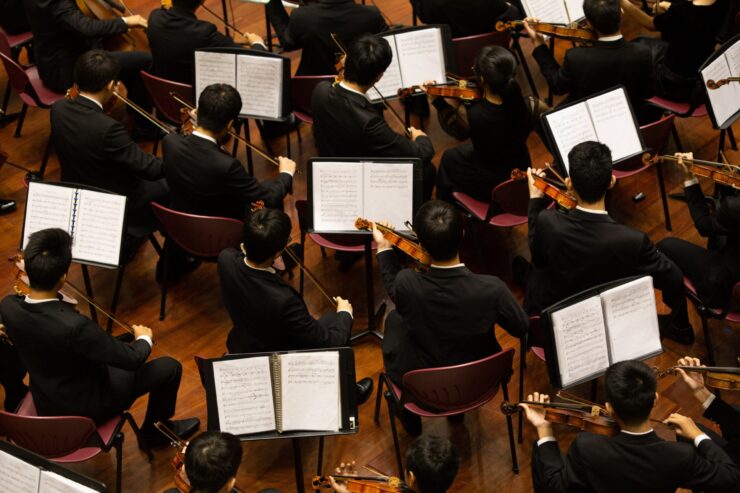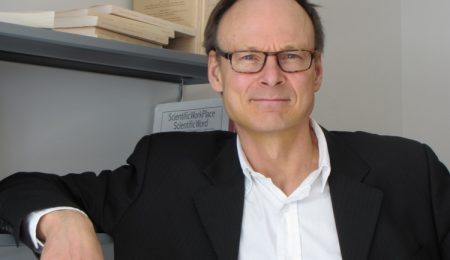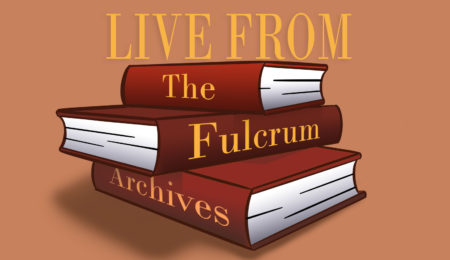NAC Hosts 4-Day Cross-Cultural Education Event
From Sept. 11-14, the National Arts Centre (NAC) hosted four nights of presentations and discussions on the topic of cross-cultural music education.
The event was made possible through the efforts of the NAC’s Arts Alive Program, which seeks to educate youth and provide educators with resources they can implement in their own classrooms.
The series featured two music educators (one Indigenous and one non-Indigenous) who recounted their experiences teaching together. Over the course of four days, they also shared how they teach cross-cultural creativity in their music classrooms.
Monday
Monday saw educators across the country call in to listen to Cree musician Walter MacDonald White Bear and classical trumpet player Samantha Whelan Kotka teach an informative class on the significance of music and storytelling in cross-cultural education.
Of the discussions, the topic of Two-Eyed Seeing was very meaningful to the theme of the 4-day event. In the words of Mi’kmaq Elder Albert Marshall, Two-Eyed Seeing is “learning to see from one eye with the strengths of Indigenous ways of knowing and from the other eye with the strengths of Western ways of knowing and to using both of these eyes together.” This is a theme we were encouraged to incorporate both ways into our learning.
One of the highlights of Monday night was MacDonald and Kotka leading the call through an improvised poetry lesson, one of the lessons they have used in their classrooms. In the session, participants were shown art from First Nations artist Alex Janvier, and asked to write a poem about it. After a couple of minutes, Kotka read the poems aloud with MacDonald performing improvisations with each passage. To highlight the people who these poems came from everyone would say ‘they speak to me’ in Cree at the end of each poem.
Tuesday
The next evening featured Iqaluit visual artist and throat singer Olivia Chislett alongside ethnomusicologist and music educator Dr. Mary Piercey-Lewis as they guided yet another large virtual audience through teaching the art of Inuit music.
Some of the key discussions during Tuesday’s session included efforts to forward the Nunavut music curriculum, putting certain Indigenous music to documented notation, and the role combining cultural styles can play in music exploration as education.
An adjacent topic that was brought up in conversations about throat singing was the importance of education respecting cultural traditions. As echoed through all sessions, educators must be respectful of what music they share and not cross cultural boundaries.
Wednesday
Wednesday’s session was led by Mi’kmaq musician, dancer, and author Richard (Eagle Dancer) Pellissier-Lush and his co-educator, multidisciplinary educator of the arts, and professional percussionist Ryan E. Drew.
Pellissier-Lush and Drew discussed a wide array of topics, including the incorporation of drumming in the classroom, musical trail walks, and more.
One topic that received emphasis was inquiry-based learning and being a “curious percussionist”, letting questions guide the learning.
Thursday
The last day of the event was an open panel discussion, featuring all educators over the past three events. The NAC is currently in the process of making the livestream accessible.
Aftermath
The Fulcrum touched base with Ryan Drew, one of the coordinators and educators at the event. Drew illustrated the importance of music education that is respectful of cultural traditions, some of which can only be properly taught from an Indigenous perspective.
“Cross-Cultural or collaborative teaching involves a variety of voices. And so I realized that I am certainly not enough to create an educational experience that is representative of diverse voices,” he said.
“And so we talk about bringing, and inviting and having Indigenous voices into the classroom, especially when speaking about Indigenous music traditions.”
A difficult question that remains regards how educators should approach cross-cultural music education. “With a series like this, we immediately recognize that there are a tremendous diversity in the voices, opinions, perspectives, ideologies in how, for example, a settler heritage musician like myself should approach Indigeneity in the classroom,” Drew continued.
“From a cross-cultural lens, specifically, I try and look at the different rules that I’ve come to learn in my own music making. And those rules are often a result of your classical greats in history, classical music greats like Mozart and Beethoven, and how that shapes my understanding of music today. And so, to have increased perspective, not only allows me to explore new musical traditions and cultures but also allows me to reimagine and reinterpret these composers or classical musicians that I studied for a long time.”
The NAC has a variety of resources for academics to use. Educators can access these resources on their website. “They’re really great to integrate into the classroom. They stimulate creativity, learning in different ways through participation.”







